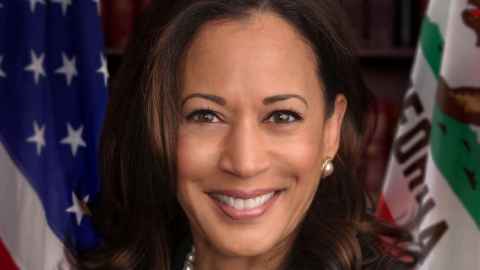Kamala Harris for VP: power for the future
12 November 2020
Opinion: The election of Kamala Harris as VP is an opportunity to make true progress in addressing the wide gender gap in US politics, writes Katherine Smits.

When Kamala Harris stepped up to the podium in Wilmington last weekend to acknowledge her and Joe Biden’s victory, and to introduce the new President-elect, there was no mistaking the feminist symbolism of her presence.
Harris wore a dazzling white pantsuit – a colour associated with the suffragists who secured the vote for women in the US in 1920 in the 19th Amendment to the Constitution. During the Trump presidency, white – dramatic, noticeable, and suggestive of moral right – has become the colour worn by Democratic women at events like Trump’s State of the Union addresses. They’re signalling solidarity against the misogyny of this President, and threats to women’s rights and freedoms under his administration.
Harris’ white pantsuit also marked her place in a history of Democratic women political candidates to high office. The colour was worn by Hillary Clinton to accept the Democratic presidential nomination in 2016, by Geraldine Ferraro when she accepted the Democratic nomination for Vice-President, to Walter Mondale in 1984, and by Shirley Chisholm, when she became the first African-American woman elected to Congress.
But in celebrating her win as the first woman Vice-President, Harris looked not only backward, but also forward to the example she would set: "While I may be the first woman in this office, I will not be the last, because every little girl watching tonight sees that this is a country of possibilities."
There are two key questions here. First: why has it taken until 2020 for a woman candidate to achieve even the Vice-Presidency in the US, the country in which the women’s liberation movement and second-wave feminism first emerged? And second: what is the likely effect of Harris’ victory in paving the way for the future successes by American women candidates for the highest office? Both of these questions cannot ignore the intersectional interweaving of race and gender in the US. Harris, the child of an Indian immigrant mother and a Jamaican immigrant father, who identifies as Black, represents hopes for changing not only gendered, but also raced expectations about American political leadership.
There have been very few women aspirants to the Presidency and Vice-Presidency in the two major American parties. Aside from Clinton and Ferraro, Shirley Chisholm ran for the Democratic nomination in 1972, and Sarah Palin was the Republican Party’s nominee for Vice-President, with John McCain, in 2008.
Numbers of women representatives are also low at other levels of government. Less than a quarter of members of Congress are women. As of this election there are 101 women members of the House of Representatives, out of 435, and 26 women Senators out of 100. The US ranks 76th on the Inter-Parliamentary Union’s list of countries for women’s representation in elected legislatures and doesn’t even reach the global average of 24.1 percent. New Zealand, by comparison, has 48 percent women representatives in our recently elected Parliament.
The under-representation of women in politics is one of the largest components of the gender gap in the US. The World Economic Forum’s Global Gender Gap index ranks the US at 26 (out of 153 countries) for economic participation and opportunity (just ahead of New Zealand at 27), but at 83 for political empowerment (compare to New Zealand at 13).
The fact that women are doing so much worse in terms of political representation than economic participation in the US suggests that the reasons why so few women are elected to high office can be found in American political processes. Many countries have increased their numbers of women representatives by the use of quotas, either imposed or voluntary. Any attempt to impose quotas by law would be struck down as unconstitutional in the US, and while the Democrats have substantially increased their numbers of women candidates for Congress, neither the Democratic nor Republican parties have committed themselves to gender quotas for representatives.
In political systems where minority parties play a larger role, such as our own MMP, quotas or co-leadership systems might be introduced by minor progressive parties, thus establishing norms which can spread. But the American first-past-the-post system means that the two main parties dominate and compete for the middle ground. The Republican party has moved to the right since the 1990s, and Democrats fear alienating large swathes of centre and centre-right voters whose votes they need to win.
Which leads us to the second question: how much will Harris’ example as Vice-President change things? There’s reason to be sceptical that the ‘politics of presence’ – where a minority or subordinated group is actually present in government – alone will bring about deep change. Barack Obama occupied the White House as a popular President for two terms, only to be followed by Trump and a spike in police killings of unarmed African-Americans. But Biden has already indicated willingness to demonstrate his support for race and gender equality in his selection of a Black woman Vice-President. If he follows through on his vow to make his Cabinet truly reflective of the diversity of America, the selection of women – and non-White – candidates for office at all levels will eventually be seen as normal.
Dr Katherine Smits is an Associate Professor of Politics and International Relations in the Faculty of Arts
This article reflects the opinion of the author and not necessarily the views of the University of Auckland.
Used with permission from Newsroom Kamala Harris for VP: power for the future 12 November 2020.
Media queries
Alison Sims | Research Communications Editor
DDI 09 923 4953
Mob 021 249 0089
Email alison.sims@auckland.ac.nz